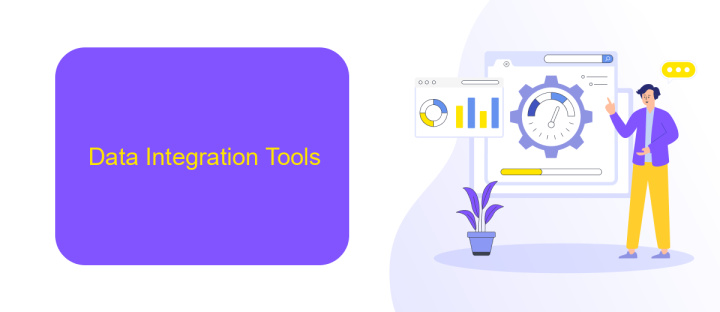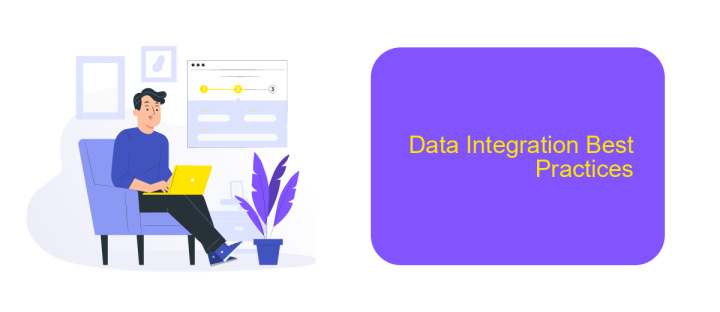Data Integration Options
In today's data-driven world, businesses face the challenge of integrating diverse data sources to gain actionable insights. Data integration options are essential for consolidating information from various systems, ensuring seamless data flow and enhancing decision-making processes. This article explores different data integration methods, highlighting their benefits and use cases to help organizations choose the best approach for their needs.
Introduction
Data integration is a critical component for modern businesses seeking to streamline their operations and make data-driven decisions. By combining data from various sources, companies can gain a comprehensive view of their operations, enhance customer experiences, and drive innovation. However, choosing the right data integration method can be challenging due to the variety of options available.
- ETL (Extract, Transform, Load)
- Data Warehousing
- API Integration
- Manual Data Entry
- Real-time Data Integration
One of the most efficient ways to manage data integration is through automated solutions like ApiX-Drive. This platform simplifies the process by allowing businesses to connect various applications without the need for coding. By leveraging tools like ApiX-Drive, organizations can reduce manual effort, minimize errors, and ensure real-time data flow across their systems. As a result, businesses can focus more on analysis and decision-making rather than on the complexities of data integration.
Data Integration Tools

When it comes to data integration, selecting the right tools is crucial for seamless data flow between diverse systems. Various tools are available to facilitate this process, each offering unique features to address specific integration needs. For instance, ETL (Extract, Transform, Load) tools like Talend and Informatica are widely used for complex data transformations and migrations. These tools can efficiently handle large volumes of data and provide robust functionalities for data cleansing and enrichment.
For businesses seeking a more user-friendly and automated approach, services like ApiX-Drive offer a compelling solution. ApiX-Drive allows users to set up integrations without any coding knowledge, making it accessible to non-technical users. This platform supports a wide range of applications and services, enabling seamless data synchronization across different systems. By leveraging such tools, organizations can ensure data consistency, reduce manual errors, and save valuable time, ultimately enhancing their overall data management strategy.
Data Integration Patterns

Data integration patterns are essential for creating seamless data flows between disparate systems. These patterns help in managing data consistency, reducing redundancy, and ensuring data integrity. Understanding these patterns can significantly enhance the efficiency of your data integration processes.
- Batch Integration: This pattern involves transferring data at scheduled intervals. It is ideal for non-time-sensitive data transfers and can handle large volumes of data.
- Real-Time Integration: This pattern ensures immediate data transfer between systems. It is crucial for applications requiring up-to-date information, such as financial systems and online services.
- ETL (Extract, Transform, Load): This pattern extracts data from multiple sources, transforms it into a suitable format, and loads it into a target system. It is widely used in data warehousing.
- API-Based Integration: This pattern uses APIs to enable communication between systems. Services like ApiX-Drive simplify this process by providing pre-built connectors and automation tools.
Choosing the right data integration pattern depends on your specific requirements, such as data volume, frequency of updates, and system compatibility. Leveraging tools like ApiX-Drive can streamline the integration process, reducing the need for manual intervention and ensuring data accuracy.
Data Integration Best Practices

Effective data integration is crucial for ensuring seamless operations and informed decision-making in any organization. To achieve optimal results, it is essential to follow best practices that enhance data accuracy, reliability, and efficiency.
Firstly, always ensure that your data sources are clean and well-structured before integration. This reduces the risk of errors and inconsistencies. Secondly, choose the right integration tools that align with your organization's needs and capabilities. For instance, ApiX-Drive offers a user-friendly platform that simplifies the integration process, making it easier to connect various data sources.
- Regularly monitor and update your data integration processes.
- Implement robust security measures to protect sensitive data.
- Ensure compatibility between different data formats and systems.
- Utilize automation tools to streamline repetitive tasks.
- Maintain clear documentation for all integration workflows.
By adhering to these best practices, organizations can significantly improve their data integration efforts. Leveraging tools like ApiX-Drive can further enhance efficiency and accuracy, providing a solid foundation for data-driven decision-making.
- Automate the work of an online store or landing
- Empower through integration
- Don't spend money on programmers and integrators
- Save time by automating routine tasks
Conclusion
In conclusion, selecting the right data integration option is critical for any organization aiming to streamline operations and enhance data accessibility. The choice between ETL, ELT, data warehousing, and real-time integration depends on the specific needs and infrastructure of the business. Each method offers unique advantages and potential drawbacks, making it essential to evaluate them based on factors such as data volume, complexity, and latency requirements.
Furthermore, leveraging tools like ApiX-Drive can significantly simplify the integration process. ApiX-Drive provides a user-friendly platform for automating data transfers between various applications, ensuring seamless connectivity and efficient data management. By utilizing such services, businesses can reduce manual effort, minimize errors, and focus more on strategic initiatives. Ultimately, the right data integration strategy, supported by robust tools, can unlock new opportunities for growth and innovation.
FAQ
What is data integration?
Why is data integration important for businesses?
What are the common methods of data integration?
How can businesses automate data integration processes?
What should be considered when choosing a data integration tool?
Apix-Drive is a universal tool that will quickly streamline any workflow, freeing you from routine and possible financial losses. Try ApiX-Drive in action and see how useful it is for you personally. In the meantime, when you are setting up connections between systems, think about where you are investing your free time, because now you will have much more of it.


